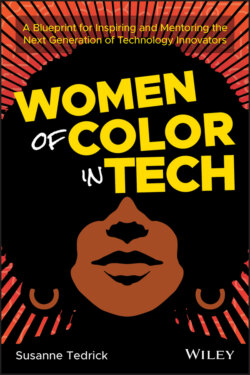Читать книгу Women of Color in Tech - Susanne Tedrick - Страница 21
We Need You!
ОглавлениеSimply put, we need more diverse representation at all levels to address the current technological challenges our society is facing as well as future challenges.
In the case of artificial intelligence (AI), businesses are using it more, through chatbots and other means, for low-level tasks—tasks that they believe are repetitive and do not generate a lot of money for them. By automating many of these tasks, and not requiring a lot of human interaction, businesses can save money on overhead costs, salaries, and more.
That's great for the business, but that isn't exactly great for everyone. Let's take the example of someone applying for a business loan at a traditional bank or lending institution. If a person applies and is, let's say, rejected or offered a higher interest rate than what they expected, a person can speak directly with a lending officer to find out why they took that course of action and could potentially negotiate or compromise to reach agreement.
If a bank or lender uses an AI interface alone to process a loan application, the process to approval or rejection may happen faster. But, if the development team behind the AI application inadvertently programs their own gender and race biases, applicants from specific demographics may experience higher rates of rejection or discriminatory actions than others. As the process is automatic, rarely is there a human being that you can speak to in order to contest or change the decision.
Development teams at these financial institutions, who are likely to be white and male, may not realize that they are entering their own biases when building algorithms to determine whether an applicant should get a mortgage. They may tend to have the same background, experiences, and ways of thinking that may put people who are outside of this scope at a severe disadvantage. Women and people of color are at a distinct disadvantage.
Where major financial decisions are involved, like buying a home and trying to start a business, women and people of color have had a historically difficult time obtaining funding and getting it a low rate. Women-owned companies receive 33 percent loan approvals in comparison to those that are male owned, and those that are people of color get far fewer approvals. In 2017, Black-women-led start-ups were only able to raise .0006 percent of the venture capital they needed for their business (not even a full percent!). Independent decision-making AI systems that have biased algorithms have the potential of making this situation much worse.
One of the best and most effective ways to combat this and to ensure that systems are designed properly is to have diverse development teams, made up of people who come from different educational, economic, and social backgrounds. This ensures that AI systems are designed to serve a wider population, not just a select few.
